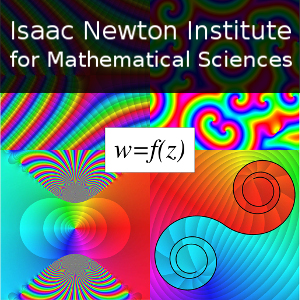Diffeomorphisms of unit circle, shape analysis and some non-linear PDEs
58 mins 55 secs,
202.26 MB,
WebM
640x360,
30.0 fps,
44100 Hz,
468.71 kbits/sec
Share this media item:
Embed this media item:
Embed this media item:
About this item

| Description: |
Markina, I
Thursday 10th October 2019 - 16:00 to 17:00 |
|---|
| Created: | 2019-10-11 11:14 |
|---|---|
| Collection: | Complex analysis: techniques, applications and computations |
| Publisher: | Isaac Newton Institute |
| Copyright: | Markina, I |
| Language: | eng (English) |
| Distribution: |
World
|
| Explicit content: | No |
| Aspect Ratio: | 16:9 |
| Screencast: | No |
| Bumper: | UCS Default |
| Trailer: | UCS Default |
| Abstract: | In the talk, we explain how univalent functions can be used to
analyze plain shapes. In its turn, the univalent functions defined on the unit disc are closely related to the group of oriented preserving diffeomorphisms of the unit circle. A moving plain shape gives rise to a curve on the group of diffeomorphisms. The requirement to describe a shape modulo its rotation and/or scaling leads to a curve subordinated to some constraints. A geodesic curve of the motion of a shape is a solution to some non-linear partial differential equation. The choice of metric leads to different PDEs, that are generalizations of equations originated in fluid dynamics, such us inviscid Burgers' equation, Camassa-Holm, Hunter-Saxton, and KdV. |
|---|---|
Available Formats
| Format | Quality | Bitrate | Size | |||
|---|---|---|---|---|---|---|
| MPEG-4 Video | 640x360 | 1.94 Mbits/sec | 857.92 MB | View | Download | |
| WebM * | 640x360 | 468.71 kbits/sec | 202.26 MB | View | Download | |
| iPod Video | 480x270 | 522.06 kbits/sec | 225.22 MB | View | Download | |
| MP3 | 44100 Hz | 249.79 kbits/sec | 107.85 MB | Listen | Download | |
| Auto | (Allows browser to choose a format it supports) | |||||

